Proszek ze stopu tytanu
Wszystko, co musisz wiedzieć o dostawcach proszków metalowych do drukowania 3D
Kategoria produktu

Proszek ze stopu tytanu składa się z tytanu zmieszanego z innymi metalowymi elementami, takimi jak aluminium, wanad, żelazo i molibden. Proszki powstają w procesie atomizacji gazowej, czyli w procesie, w którym wykorzystuje się gaz pod wysokim ciśnieniem, aby zamienić stopiony stop w drobne, kuliste cząstki idealne do produkcji addytywnej.
Stopy tytanu oferują najlepszy stosunek wytrzymałości do masy spośród wszystkich materiałów metalowych. Są tak wytrzymałe jak stal, ale lżejsze od 45%. Gdy są produkowane jako drobny proszek, stopy tytanu stają się odpowiednim surowcem do zaawansowanych technik produkcyjnych, takich jak selektywne spiekanie laserowe (SLS), topienie wiązką elektronów (EBM) i strumieniowanie spoiwem. Metody te umożliwiają tworzenie skomplikowanych kształtów i niestandardowych projektów, które nie są możliwe przy tradycyjnej produkcji.
Tytan i jego stopy wyróżniają się odpornością na korozję w trudnych warunkach. Wytrzymują słoną wodę, kwasy i chlor znacznie lepiej niż stopy aluminium, magnezu lub stali. Tytan jest również obojętny i nietoksyczny po wszczepieniu do ludzkiego ciała. Ta biokompatybilność sprawia, że jest nieoceniony w przypadku wyrobów medycznych i implantów.
Dzięki zaawansowanym właściwościom, takim jak wysoka wytrzymałość, niska gęstość, odporność na korozję i biokompatybilność, proszki stopów tytanu umożliwiają produkcję lżejszych, mocniejszych i trwalszych części dla przemysłu lotniczego, motoryzacyjnego, medycznego, chemicznego, morskiego i konsumenckiego.
Skład proszku stopu tytanu
Proszki stopów tytanu zawierają przede wszystkim tytan wraz z elementami stopowymi w celu poprawy wytrzymałości, twardości i wydajności w wysokich temperaturach. Najbardziej powszechnymi stopami tytanu są Ti-6Al-4V, Ti-6Al-4V ELI i Ti-3Al-2.5V.
| Stop | Skład |
|---|---|
| Ti-6Al-4V | 90% tytan, 6% aluminium, 4% wanad |
| Ti-6Al-4V ELI | Tytan 90%, aluminium 6%, wanad 4%, niska zawartość zanieczyszczeń międzywęzłowych |
| Ti-3Al-2.5V | Tytan 95%, aluminium 3%, wanad 2,5% |
Inne pierwiastki stopowe, takie jak żelazo, molibden, cyrkon, cyna, tantal lub niob, mogą być obecne w niewielkich ilościach. Skład jest starannie kontrolowany w celu uzyskania docelowych właściwości po produkcji addytywnej.
Właściwości proszku stopu tytanu
Niepowtarzalne właściwości stopów tytanu w formie proszku umożliwiają zaawansowaną produkcję, zastosowania w lotnictwie, medycynie i innych nowoczesnych technologiach.
| Nieruchomość | Ti-6Al-4V | Ti-6Al-4V ELI | Ti-3Al-2.5V |
|---|---|---|---|
| Gęstość | 4,43 g/cm3 | 4,43 g/cm3 | 4,48 g/cm3 |
| Temperatura topnienia | 1604°C | 1604°C | 1615°C |
| Wytrzymałość na rozciąganie | Min. 1170 MPa | Min. 1100 MPa | Min. 1095 MPa |
| Wytrzymałość na rozciąganie | Min. 1035 MPa | Min. 1035 MPa | Min. 1000 MPa |
| Wydłużenie | 10-15% | 8-15% | 8-10% |
| Moduł sprężystości | 114 GPa | 114 GPa | 115 GPa |
| Wytrzymałość zmęczeniowa | 485 MPa | 485 MPa | 450 MPa |
| Wytrzymałość na złamania | 75 MPa-m^1/2 | 60 MPa-m^1/2 | 65 MPa-m^1/2 |
| Przewodność cieplna | 7 W/mK | 7 W/mK | 6,7 W/m-K |
| Rezystywność elektryczna | 170-190 μΩ-cm | 170-190 μΩ-cm | 172 μΩ-cm |
| Współczynnik rozszerzalności cieplnej | 8,6 μm/m-°C | 8,6 μm/m-°C | 8,8 μm/m-°C |
Właściwości drukowanych części zależą od procesu wytwarzania addytywnego, jak również obróbki cieplnej po drukowaniu. Na przykład, topienie wiązką elektronów (EBM) generuje drobniejsze mikrostruktury i lepsze właściwości mechaniczne w porównaniu do selektywnego topienia laserowego (SLM). Postprodukcja, taka jak prasowanie izostatyczne na gorąco (HIP), może dodatkowo zwiększyć gęstość, wykończenie powierzchni, dokładność wymiarową i wydajność materiału.
Zastosowania proszku stopu tytanu
Poniżej przedstawiono główne obszary zastosowań proszku stopu tytanu:
| Przemysł | Zastosowania |
|---|---|
| Lotnictwo i kosmonautyka | Elementy silnika, części płatowca, elementy mocujące, układy hydrauliczne |
| Medyczny | Implanty, narzędzia chirurgiczne, korzenie zębowe, aparaty ortodontyczne |
| Motoryzacja | Korbowody, zawory, sprężyny, elementy mocujące, koła zębate |
| Chemiczny | Pompy, zawory, rury, wymienniki ciepła, naczynia reakcyjne |
| Ropa i gaz | Wiertła, narzędzia wykończeniowe, elementy podwodne |
| Wytwarzanie energii | Łopatki turbin, wymienniki ciepła, rurociągi parowe i gazowe |
| Artykuły sportowe | Kije golfowe, ramy rowerowe, kije hokejowe, kije do lacrosse'a |
| Towary konsumpcyjne | Zegarki, okulary, biżuteria, smartfony, aparaty fotograficzne |
Stopy tytanu umożliwiają lekkie, wysokowydajne projekty w branżach, w których wytrzymałość, odporność na korozję i biokompatybilność mają kluczowe znaczenie. Elastyczność metalurgii proszków umożliwia produkcję złożonych części o kształcie netto, niemożliwych do uzyskania przy użyciu konwencjonalnych produktów z walcowni tytanu.
Specyfikacje proszku stopu tytanu
Proszki stopów tytanu są dostępne w różnych zakresach rozmiarów, składach, metodach produkcji i poziomach czystości. Oto niektóre z kluczowych parametrów specyfikacji:
| Parametr | Typowe wartości |
|---|---|
| Wielkość cząstek | 10-45 µm, 15-53 µm, 45-150 µm |
| Kształt cząsteczki | Kulisty, nieregularny |
| Metoda produkcji | Atomizacja gazu, proces plazmowej elektrody wirującej, wodorek-wodorek |
| Czystość | Klasa 1, 2, 3, 4, 5 |
| Gatunek stopu | Ti-6Al-4V, Ti-6Al-7Nb, Ti-555, Ti-1023 itp. |
| Gęstość pozorna | 2,5-4,5 g/cm3 |
| Gęstość kranu | Gęstość materiału do 80% |
| Zawartość tlenu | 3000-5000 ppm |
| Zawartość azotu | 150-500 ppm |
| Zawartość wodoru | 100-200 ppm |
| Natężenie przepływu | Do 25 s/50 g |
| Powierzchnia właściwa | 0,1-1,0 m2/g |
Specyfikacje oparte są na normie ASTM B988 dla rozpylanego gazowo sferycznego proszku stopu tytanu i innych międzynarodowych normach. Dostępne są również niestandardowe składy i charakterystyki cząstek do specjalistycznych zastosowań.
Ceny proszku ze stopu tytanu
Cena proszku stopu tytanu zależy od wielu czynników:
| Czynnik | Wpływ na cenę |
|---|---|
| Skład stopu | Wyższa zawartość stopu zwiększa koszty |
| Poziom czystości | Wyższe klasy czystości są droższe |
| Rozkład wielkości cząstek | Mniejsze rozmiary mają wyższą cenę |
| Metoda produkcji | Proszki plazmowe i HDH są droższe od rozpylanych gazowo |
| Ilość zamówienia | Ceny spadają przy większych ilościach zamówienia |
| Opakowanie | Puszki uszczelnione argonem zwiększają koszty |
Niektóre orientacyjne przedziały cenowe:
- Proszek Ti-6Al-4V 15-45 μm: $50-80/lb
- Proszek Ti-6Al-4V 45-150 μm: $30-50/lb
- Małe partie w zamkniętych puszkach są o ~30% wyższe
- Proszek plazmowy Ti-6Al-4V: $120-150/lb
- Proszek o czystości 1 stopnia: $200-300/funt
Skontaktuj się z renomowanymi dostawcami, takimi jak AP&C, Tekna i Advanced Powders, aby uzyskać wycenę opartą na Twoich konkretnych wymaganiach. Uważaj na tanie proszki z nieznanych źródeł o wątpliwej jakości.
Porównanie metod produkcji proszku tytanowego
Porównanie metod produkcji proszku tytanowego
| Metoda | Atomizacja gazu | Atomizacja plazmowa |
|---|---|---|
| Opis | Stop stopiony w komorze próżniowej, poddawany działaniu strumieni gazu obojętnego o dużej prędkości w celu wytworzenia proszku | Stop stopiony za pomocą palnika plazmowego, para ultradrobnych kropelek szybko zestaliła się w proszek |
| Wielkość cząstek | 15-150 mikronów | 5-45 mikronów |
| Kształt cząsteczki | Nieregularne sferoidy | Bardzo kulisty |
| Odbiór tlenu | Umiarkowany | Niski |
| Koszt | Niższy | Wyższy |
| Skalowalność | Większa pojemność | Małe partie |
| Typowe zastosowania | Większość produkcji addytywnej | Lotnictwo i kosmonautyka, medycyna |
Atomizacja gazowa jest standardową metodą produkcji stosowaną przez głównych dostawców proszku tytanowego. Atomizacja plazmowa tworzy drobniejsze, bardziej kuliste proszki, ale ma wyższy koszt i niższą wydajność.
Często zadawane pytania
P: Jakie są główne zalety stosowania proszku stopu tytanu?
A: Głównymi zaletami są doskonały stosunek wytrzymałości do masy, odporność na korozję, biokompatybilność, elastyczność projektowania, możliwość produkcji części o skomplikowanych kształtach i wydajność w wysokich temperaturach.
P: W jakich gałęziach przemysłu proszek stopu tytanu jest wykorzystywany najczęściej?
A: Proszek tytanowy do produkcji zaawansowanych komponentów wykorzystuje się głównie w przemyśle lotniczym, medycznym, motoryzacyjnym, przetwórstwie chemicznym, przemyśle naftowym i gazowym, sprzęcie sportowym oraz w energetyce.
P: Jakie są przykłady zastosowań proszku stopu tytanu?
A: Konkretne zastosowania obejmują części silników lotniczych i płatowców, implanty i instrumenty biomedyczne, zawory i korbowody samochodowe, sprzęt do przetwórstwa chemicznego, kije golfowe, zegarki i rowery.
P: Jakie składy stopów są powszechnie stosowane w przypadku proszku tytanowego?
A: Do popularnych stopów należą Ti-6Al-4V, Ti-6Al-7Nb, Ti-555, Ti-1023 oraz komercyjnie czyste gatunki tytanu od 1 do 4. Dokładny skład jest dostosowywany do wymagań dotyczących właściwości i przetwarzania.
P: W jakich procesach produkcyjnych jako surowiec stosuje się proszek stopu tytanu?
A: Głównymi procesami są formowanie wtryskowe metali (MIM), spawanie proszków laserem (L-PBF), spawanie proszków wiązką elektronów (EB-PBF) i kierowane osadzanie energii (DED).
P: Jakie są właściwości stopów tytanu otrzymywanych metodą metalurgii proszkowej w porównaniu z tytanem obrabianym plastycznie i odlewanym?
A: Przy optymalnym przetwarzaniu, części tytanowe z metalurgii proszków mogą osiągnąć właściwości mechaniczne porównywalne, a czasami lepsze od produktów odlewanych lub kutych. Jednak anizotropia właściwości i wady wymagają ścisłej kontroli i kwalifikacji.
P: Jakie są najważniejsze specyfikacje proszku stopu tytanu?
A: Ważne cechy obejmują rozkład wielkości cząstek, kształt cząstek, gęstość pozorną, gęstość nasypową, szybkość przepływu, skład stopu, zawartość tlenu/azotu/wodoru, powierzchnię właściwą i metodę produkcji proszku.
P: Jakie środki ostrożności należy zachować przy obchodzeniu się z proszkiem stopu tytanu?
A: Atmosfera obojętna, unikanie źródeł zapłonu, uziemienie sprzętu, minimalizowanie wytwarzania pyłu i noszenie środków ochrony osobistej są niezbędne do bezpiecznego obchodzenia się z reaktywnym proszkiem tytanowym. Aby zapobiec zanieczyszczeniu lub zmianom właściwości proszku, konieczne są ścisłe procedury.
Cena hurtowa: $20/Kg-$300/Kg
Wyświetlanie wszystkich wyników: 13
-

Proszek Ti45Nb do wytwarzania przyrostowego
-

Proszek stopu TiNb
-

Proszek stopu TiNbZrSn
-

Proszek Ti6Al4V Proszek metalowy na bazie tytanu do produkcji addytywnej
-
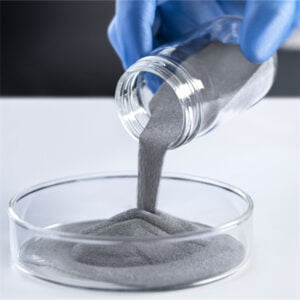
CPTi Powder
-
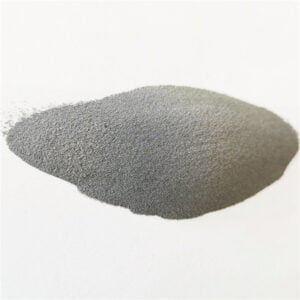
Proszek TC18: Uwolnienie mocy węglika tytanu
-
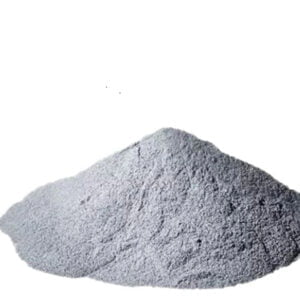
Proszek TC11: Kompleksowy przewodnik
-

TC4 ELI Powder
-

Najlepszy proszek Ti-6Al-4V (TC4 Powder) do produkcji addytywnej
-
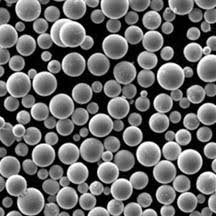
Tytan i aluminium w proszku TA7
-
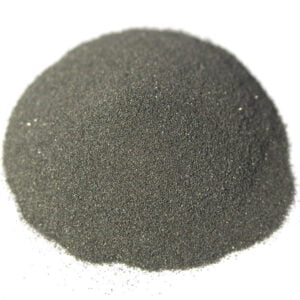
Czysty tytan w proszku
-
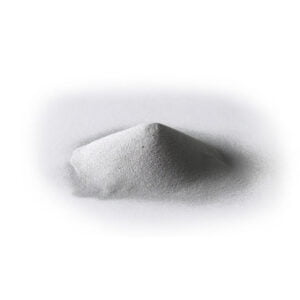
Proszek ze stopu tytanu Ti-6Al-4V
-
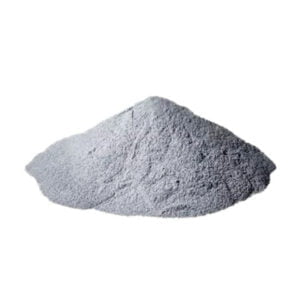
PREP Ogniotrwały proszek ze stopu tytanu
Często zadawane pytania dotyczące proszku metalicznego do druku 3D
Jak mogę skontaktować się z obsługą klienta Metal3DP?
Zapewniamy całodobową obsługę klienta. Nasze dane kontaktowe można znaleźć na stronie Kontakt, w tym telefon, e-mail i czat online.
Jakie materiały proszkowe oferuje Metal3DP?
Oferujemy różne wysokiej jakości proszki metali, w tym stal nierdzewną, stopy wysokotemperaturowe, odpowiednie do procesów takich jak fuzja laserowa i wiązka elektronów w złożu proszkowym.
W jaki sposób Metal3DP zapewnia jakość proszku metalowego do druku 3D?
Dzięki rozległemu doświadczeniu w produkcji przyrostowej metali stosujemy zaawansowane procesy i rygorystyczną kontrolę jakości, aby zapewnić właściwości mechaniczne i jakość powierzchni części.
W jakich branżach stosowane są urządzenia do druku 3D Metal3DP?
Nasze urządzenia mają szeroki zakres zastosowań w branżach takich jak lotnicza, medyczna, motoryzacyjna i innych, zapewniając rozwiązania dla wysokowydajnych komponentów metalowych w produkcji.
Czy Metal3DP oferuje niestandardowe opcje stopów?
Tak, świadczymy niestandardowe usługi w zakresie stopów, aby spełnić określone wymagania materiałowe klientów.
Jakie są zalety systemów SEBM firmy Metal3DP?
Nasze systemy SEBM wyróżniają się w produkcji złożonych części metalowych o wyjątkowych właściwościach mechanicznych. Kluczowe cechy obejmują wiodącą w branży objętość produkcji, precyzję i niezawodność.
Czy na stronie Metal3DP mogę znaleźć przypadki zastosowań?
Tak, nasza strona internetowa prezentuje szeroką gamę przypadków zastosowań demonstrujących udane wdrożenia technologii Metal3DP w różnych branżach.
Jak mogę rozpocząć współpracę z Metal3DP?
Skontaktuj się z nami, a nasz zespół zapewni Ci rozwiązania i plany współpracy dostosowane do Twoich potrzeb.
Jaki jest czas realizacji niestandardowych usług Metal3DP?
Czas realizacji usług niestandardowych różni się w zależności od złożoności projektu. Zapewnimy dokładny czas dostawy w oparciu o Twoje wymagania.
Jakie technologie druku 3D oferuje Metal3DP?
Specjalizujemy się w selektywnym spiekaniu laserowym (SLS), selektywnym topieniu laserowym (SLM) i selektywnym topieniu wiązką elektronów (SEBM), a także w innych technologiach druku 3D.
WYŚLIJ NAS
Zadać inne pytanie?
Jeśli nie możesz znaleźć odpowiedzi na swoje pytanie w naszym FAQ, zawsze możesz zostawić nam wiadomość. Wkrótce na nią odpowiemy.
CZEKAJ NA NAS
Następny krok
01. Przygotujemy propozycję
Wymagany zakres, harmonogram i APR. Cena zostanie uwzględniona, jeśli przekażesz nam szczegółowe informacje o projekcie.
02. Omówmy to razem
Zapoznajmy się i omówmy wszystkie możliwe warianty i opcje
03. Zacznijmy budować
Po podpisaniu umowy i ustaleniu wszystkich celów możemy rozpocząć pierwszy sprint.

Proszki metali do druku 3D i produkcji addytywnej
PRODUKT
cONTACT INFO
- Miasto Qingdao, Shandong, Chiny
- [email protected]
- [email protected]
- +86 19116340731





